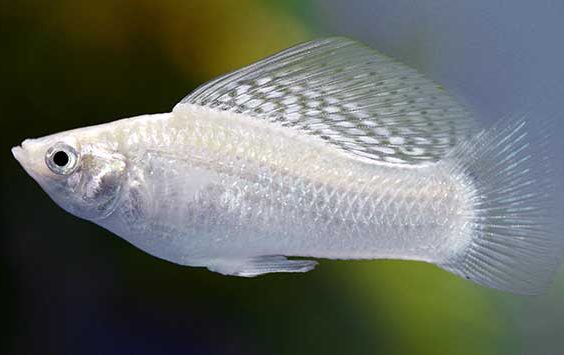Contents
- The Best Low Light Aquarium Plants
- 1. Java Fern
- 2. Java Moss
- 3. Anubias
- 4. Water Wisteria
- 5. Crypts
- 6. Amazon Sword
- 7. Dwarf Sagittaria
- 8. Dwarf Rotala
- 9. Green Hygro
- 10. Sunset Hygro
- 11. Hornwort
- 12. Rotala Indica
- 13. Rotala Rotundifolia
- 14. Brazilian Pennywort
- 15. Guppy Grass
- 16. Waterwheel Plant
- 17. American Waterweed
- 18. Red Ludwigia
- 19. Marimo Moss Balls
- 20. Bacopa
- 21. Pelia
- Which Light is Best for Your plants?
- Can Aquarium Plants Tolerate Natural Sunlight?
- Summary
Aquarium plants improve the aesthetics of an aquarium and play an important part in the tank’s ecosystem. They work as a natural filter for detrimental chemicals and excessive nutrients while escalating oxygen levels in the water.
And low light aquarium plants are ideal for beginners as they require little maintenance. They can grow in darker environments without requiring various supplements and carbon dioxide. Plus, most low-light plants have a quick growth rate.
Continue reading to learn more about building low light aquarium systems and find out the best plant species that thrive in low light conditions.
The Best Low Light Aquarium Plants

1. Java Fern
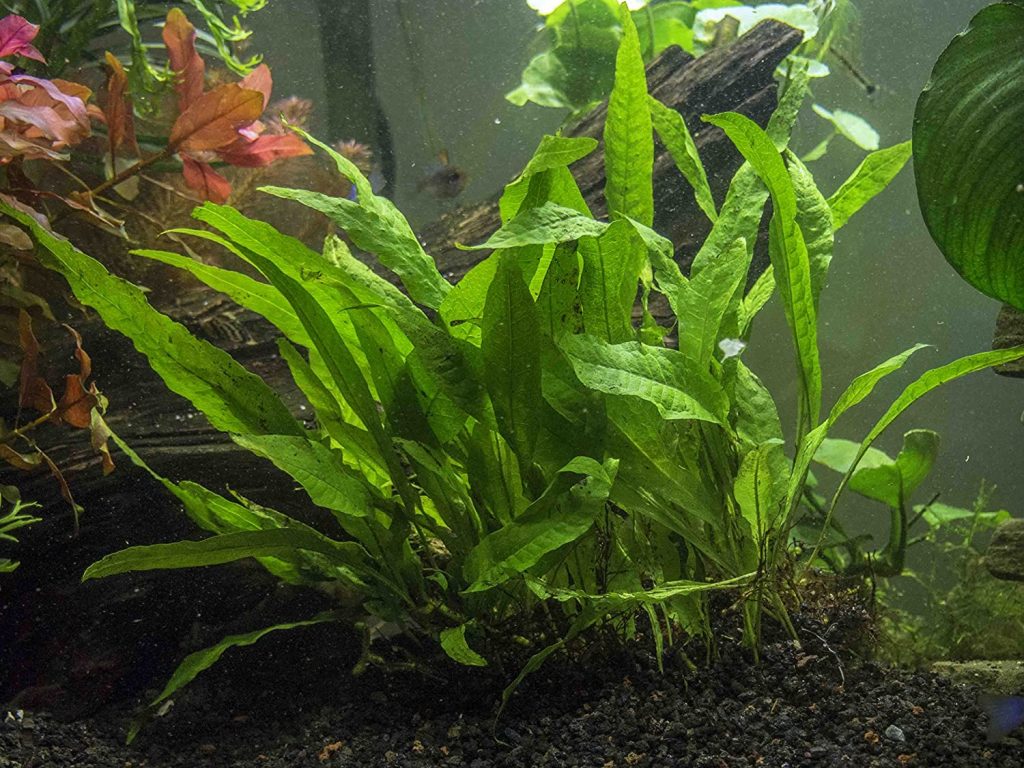
Java fern is a popular low-light aquarium plant loved by both expert and novice plant keepers. The plant grows well when attached to rocks or driftwood. Everything you need is a bit of super glue or fishing line, and wait for it to secure itself.
Java fern consists of long, sharp leaves that can easily fill spaces, particularly in new aquariums. Underneath the leaves, you will notice rows of round, brownish-black spores that might make novices think they’re dealing with algae. In fact, these spores – a feature of all ferns – can create plantlets that you can replant for a fuller and greener look in the tank.
The sad news is you might have to deal with algae on Java fern more than you want if the water conditions are improper.
2. Java Moss

Java moss is a hardy aquatic moss that can be adhered to rocks and wood above and below water, creating a more natural look for any aquarium setup. That’s the reason why Java moss is used not only in aquariums but also in paludariums and terrariums.
The tip to helping Java moss flourish in its emergent form is to get a tight-fitting lid to capture the moisture, which will generate a humid environment.
Java moss is useful for fish and shrimp fry that loves more hiding places in a breeding or community tank. Its fine-leaved, stringy fronds have a great amount of edible biofilm and provide many covers.
The only downside of this low-light aquarium plant is that it’s a big trap for debris, so extra care is needed when cleaning. In case fronds start to brown or die off, you might have to trim the plant to keep it healthy.
3. Anubias

No collection of low-light aquarium plants is adequate without listing the almighty Anubias. This plant is a staple in various low-tech tanks as it grows with minimal attention and withstands a variety of conditions and environments.
Native to West Africa, Anubias plant often contains broad, rounded leaves. The plant thrives best when attached to rocks or driftwood since it has yet to grow well in the substrate.
The plant does not love being under harsh light, so if the rest of the plants in the tank can deal with it, you should build plenty of shade by placing floating plants on the surface of the aquarium.
Thanks to its sturdy leaves, Anubias is a favorite for numerous labyrinth fish who tend to take a nap near the water surface. For example, bettas love resting amongst the leaves, and other fish and invert species will greatly enjoy the added cover.
4. Water Wisteria

If you’re looking for a tall, feathery plant, then water wisteria is a perfect option. This is a stem plant that brings incredible cover for shy fish and shrimp.
Keep in mind that this plant thrives very quickly, so regular pruning of its leaves will be necessary to keep it from being unruly. If you don’t do anything, the plant might overwhelm nearby plants in the tank.
Even though it’s commonly classified as a low light aquarium plant, Water wisteria will grow its best in medium to high light. Whether it’s proper for your low-light aquarium depends completely on your preferences: its development pattern differs based on lighting conditions. If you love fine, feathery leaves, keep this plant under low light.
5. Crypts

Crypts plant, like Cryptocoryne wendtii, are excellent plants for filling out the floor of a tank. There are many options out there that range in size, with some being proper for nano aquariums and some for huge tanks. In addition, an array of selectively cultivated colors is now available.
Do remember that crypts can be a little finicky during the acclimation process. A lot of plants suffer from some discoloration and have leaves die off because they acclimate to a new tank, but it’s much faster and more obvious with crypts.
It’s not regular to notice leaves dying a day or two after planting. Nevertheless, refuse the temptation to pull out the entire plant. When it settles, it should begin to grow a little to no time.
If you have a small tank, Cryptocoryne wendtii is a safe plant to grow as it doesn’t tend to extend to more than 6 inches tall and 6 inches wide. This low-light aquarium plant comes in a number of colors, including brown, green, and red.
6. Amazon Sword
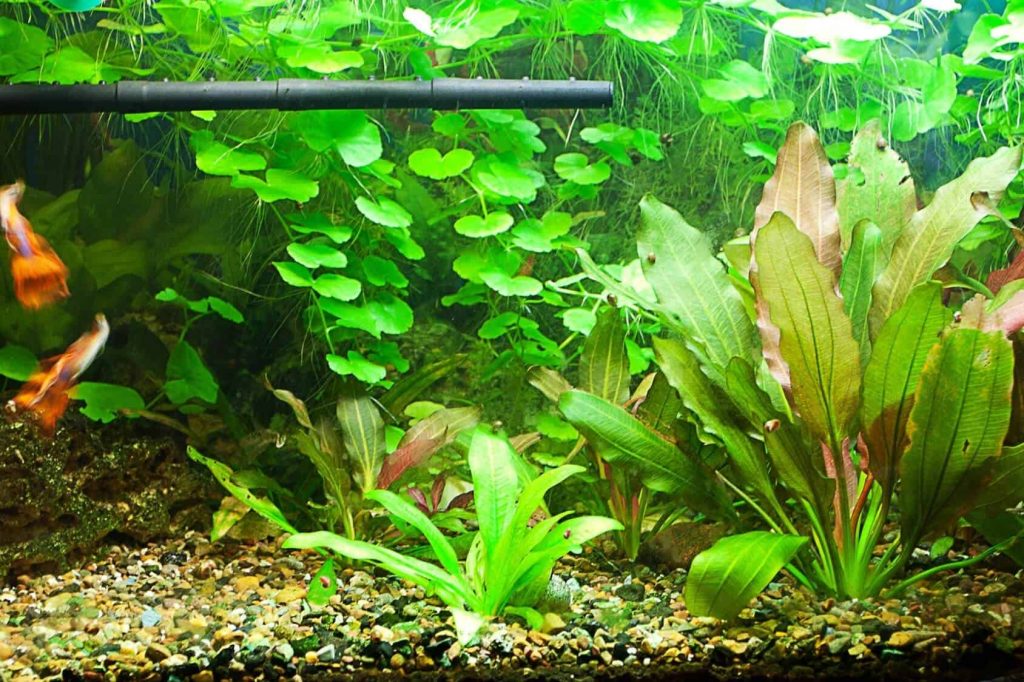
If you’re searching for a big plant to fill in your aquarium right from the start, particularly in the background, you should go for Amazon Sword. It can grow tall and big (more than 20 inches), with leaves in various shapes and sizes.
Amazon Swords require a considerable quantity of nutrients in the substrate to thrive. This might frighten beginner planted aquarium enthusiasts, but it’s quite simple to offer the plant what it requires by adding some root tabs to the substrate. Given its sheer size, this low-light aquarium plant won’t grow well in nano aquarium setups.
While Amazon swords are suitable for low-light tanks, they will develop their best with 10 to 12 hours of medium to high light. With their fondness for light and how slowly they develop in low light conditions, algae blooms can be a problem if left unchecked.
7. Dwarf Sagittaria
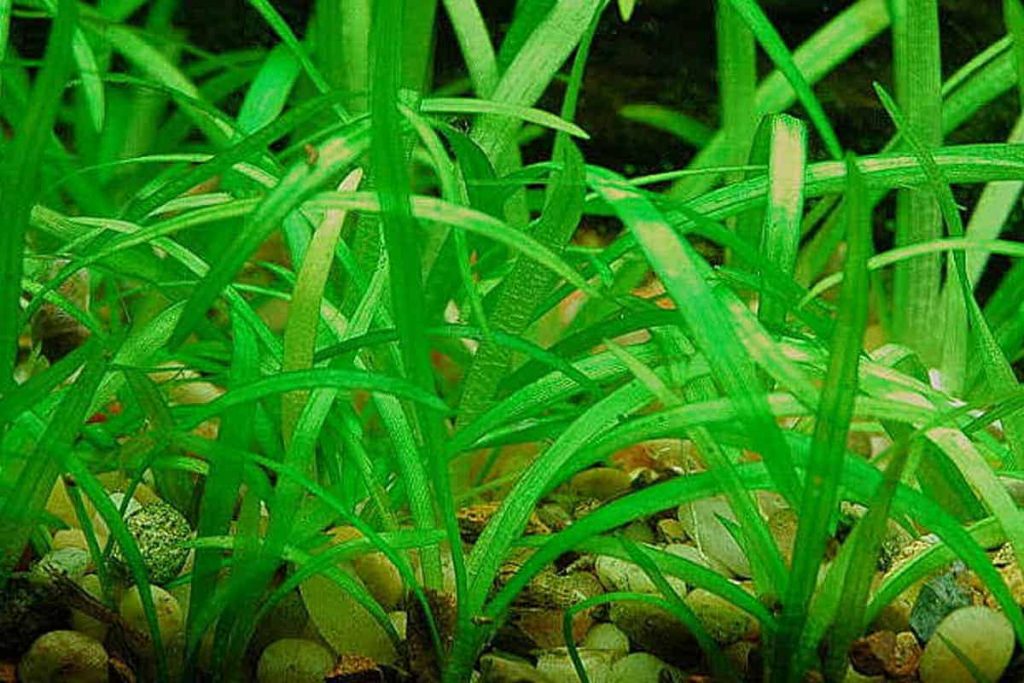
Dwarf Sagittaria is a grass-like foreground plant that thrives quickly and is great for covering the floor of a new tank. Nonetheless, sometimes the plant can grow too tall, extending up to 12 inches. If it’s moved to the background, it tends to grow low to the ground again.
To prevent problems with the plant growing too tall, it’s essential to frequently “mow the lawn” to keep your plant at the desired height.
8. Dwarf Rotala
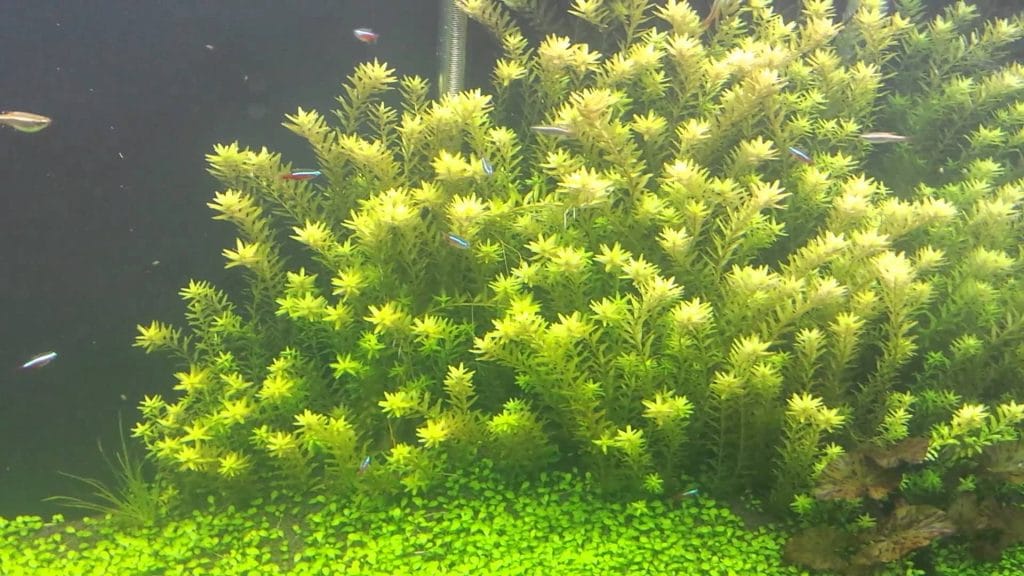
If you’re a bit bored of seeing nothing but green leaves in your tank, Dwarf Rotala is worth trying, thanks to its red coloration. The plant can be lumped in low-light aquarium plants and still grow well. Nevertheless, it will become reddest under medium to high light.
It is a stem plant with numerous fine leaves that create a lush, compact look. The plant’s leaves will become brighter green and rounded when grown emersed, while submersed Dwarf Rotala tend to have sharper and narrower reddish leaves.
However, as it might grow shoots out from its sides, frequent pruning will be needed to ensure the lower leaves receive sufficient light. If left unchecked, the bottoms of the stems tend to shed their leaves, giving the plant a bare look.
9. Green Hygro

Green hygro is considered an easy-to-plant and hardy freshwater aquarium plant, even though it needs a significant amount of trimming due to its rapid growth rates.
Trimming this low-light aquarium plant also makes it grow more, so you can leverage this as a method to promote renewed leaf generation in areas that start to brown.
Green hygro is rooted in the substrate at the bottom of the aquarium, but you can utilize any type of substrate as it gets its nutrients from the water column.
While the plant can work well with just about any freshwater aquarium and is not touched by herbivorous fish, it can be disturbed by digging cichlids or goldfish.
10. Sunset Hygro
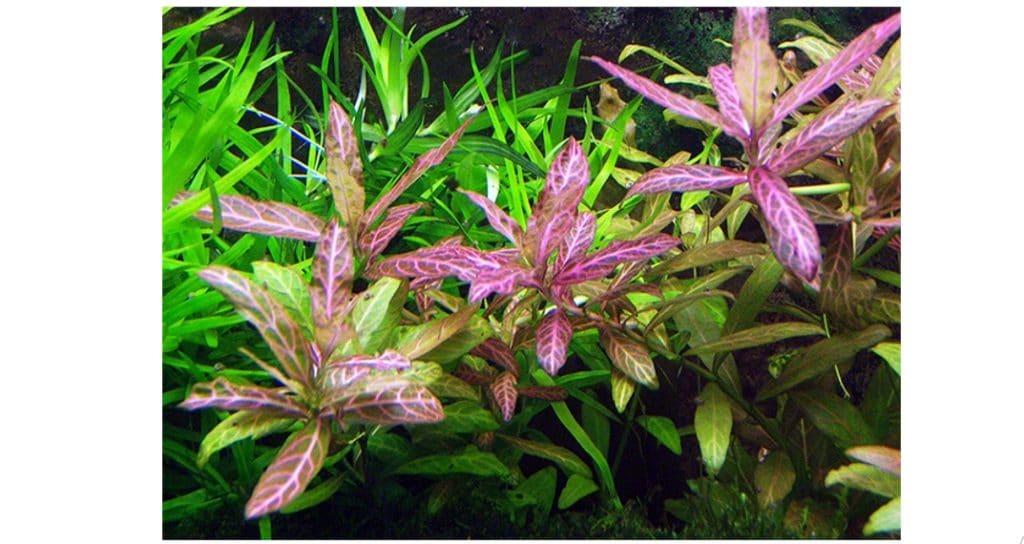
Sunset hygro is a green leafy plant, with red and purple leaves at the top of its stalk.
This quickly-growing tropical freshwater plant can be planted in the substrate or left freely floating at the top of your aquarium, which can reach up to 16 inches in length. When anchored to the substrate, Sunset hygro will suck up nutrients via its roots and leaves.
This low light aquarium plant is derived from Southeast Asia, preferring warm water tanks. Otherwise, the plant requires minimum maintenance and withstands a variety of lighting conditions.
11. Hornwort
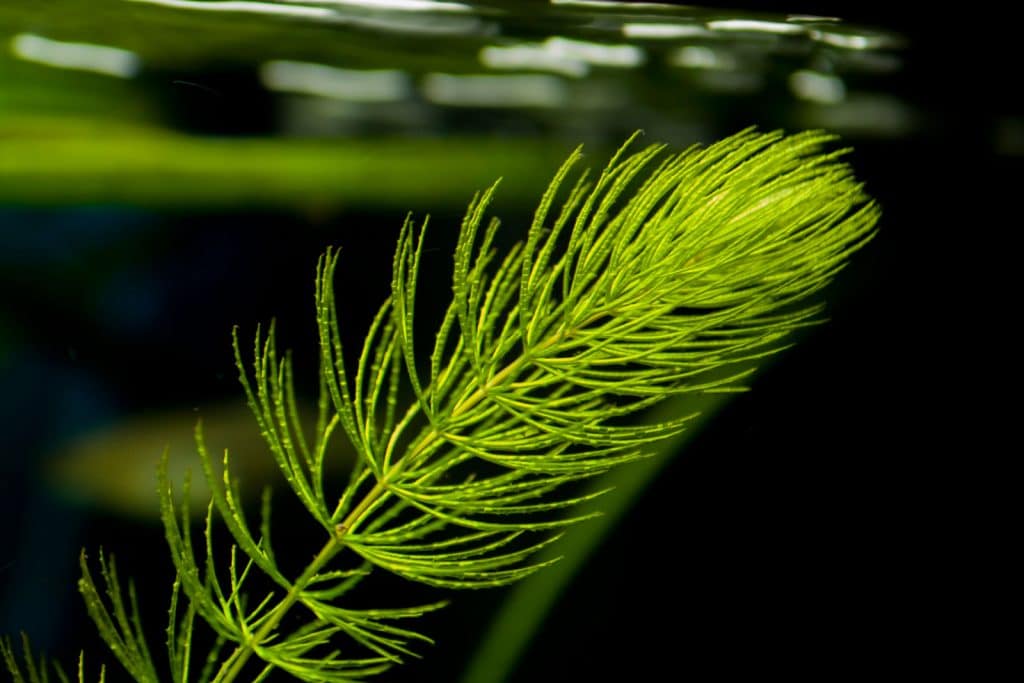
Hornwort is also a fast-developing plant that can extend up to 10 feet high, so it’s suitable for aquarists with big aquariums and plenty of patience for trimming.
Besides, hornwort can give off chemicals that might hinder the growth of other plants, so you might find other plants starting to die off after you introduce hornwort to your aquarium.
This low-light aquarium plant is intensely hardy and can fill the landscaping of an aquarium thanks to the different stems that one plant puts up.
Hornwort will feed on the water column, and can be planted in the substrate with rhizomes or freely float on the water’s surface. The plant can thrive in both cold water (60 degrees Fahrenheit) and tropical freshwater aquariums without any problem.
12. Rotala Indica
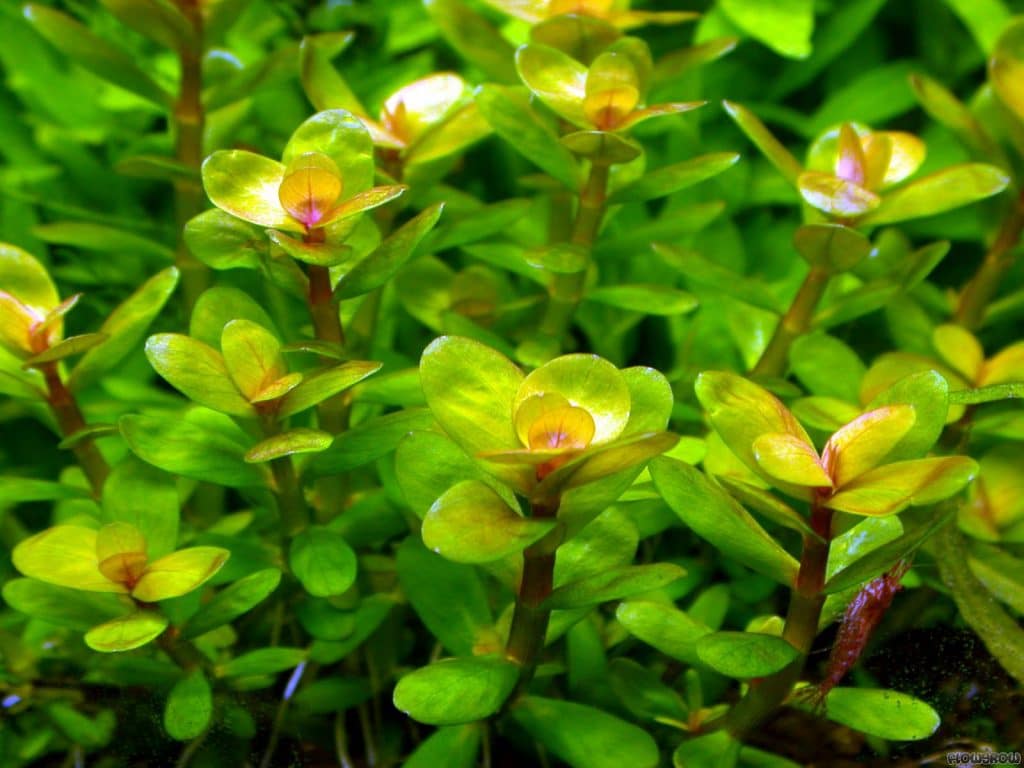
This is a stem plant with needle-like leaves that are rather green on the top and red on the bottom.
Rotala Indica is relatively susceptible and needs a moderate level of care to keep it developing consistently.
It needs water warmer than 72 degrees Fahrenheit and preferable closer to 80 degrees Fahrenheit – a substrate that the plant can grow along with, and an aquarium without digging cichlids that can destroy its root system.
Even then, Rotala Indica is particularly fragile under low-light conditions and might not thrive in a dense bush without extra lighting.
13. Rotala Rotundifolia

This column-feeding stem plant with short needle-like leaves develops steadily towards the top of your aquarium and is scarcely limited by its maximum length.
Even though Rotala Rotundifolia is quite hardy and can be handled by novices, it is ideal for more experienced aquarists as it is well-adapted to a mix of low to moderate lighting and nitrate limitations.
Moreover, it can live in harmony with a large number of freshwater fish and can withstand a wide range of water temperatures.
This low-light aquarium plant needs considerable trimming and can thrive in dense bushes with great care. Gradually, you will have to replant the whole stem from the top sections as the undergrowth starts to die off.
14. Brazilian Pennywort

It is a colorful green plant with rouned leaves growing along a creeping vine.
Brazilian pennywort can thrive fast under high light and nitrogen conditions, as well as is compatible with developing at a slower pace in low light environments. Though it loves warmer water temperatures, it also survives in comparatively cold tropical freshwater aquariums.
The plant is a column feeder, anchoring to the aquarium’s substrate or freely floating near the surface of the water. This causes it to be extremely versatile, yet the plant can be choking in smaller tanks.
15. Guppy Grass

Guppy grass is commonly seen in breeding and shrimp tanks since its long, tangled stems and narrow leaves give lots of places for small creatures to hide.
Guppy grass has the ability to tolerate different lighting conditions, though, under low light, you should expect a darker green color.
As a fast-thriving column feeder, the plant might need regular trimming if you don’t want it to completely spread over your aquarium. Guppy grass is also easy to handle and can develop in freshwater aquariums up to 85 degrees.
16. Waterwheel Plant

The waterwheel plant is amongst the few carnivorous aquatic plants, which enables it to be grown in low light as it doesn’t depend on photosynthesis.
Whereas the carnivorous nature attracts many aquarists’ interest, you don’t have to worry that this plant will consume your fish – it mainly eats microorganisms and tiny plankton and absorbs its nutrients from the water column.
Although the plant is quite small and free-floating, it can be difficult to care for as you need to ensure a source of food for it. This might mean putting zooplankton in your aquarium, which will also affect your water chemistry and act as an extra food source for your fish.
17. American Waterweed
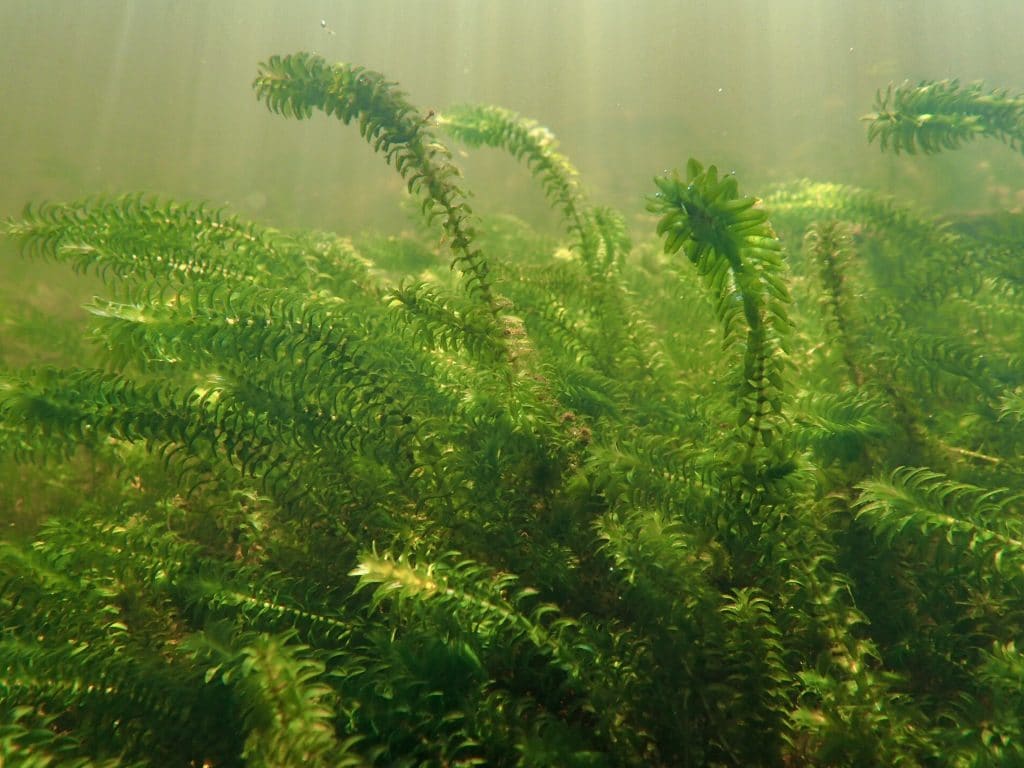
American waterweed thrives in stalks and shoots up to three feet in length, with small leaves protruding off every stem. The low-light aquarium plant can develop in a wide array of conditions and requires easy care and maintenance.
This column feeding plant creates a generous amount of oxygen and offers a lot of hiding space for fish fry and other small creatures.
Nevertheless, one thing to note is that its closed structure does not bring many habitats for large fish species, and it can rapidly develop, taking over your aquarium.
18. Red Ludwigia

Red ludwigia is an incredibly colored stem plant with broad leaves that range from red to bright orange.
Though it can be planted standalone, most aquarists decide to grow sets of red ludwigia together as it enhances their decorative effect. Regular trimming is not needed but can promote the plant to create a bushy appearance.
This low-light aquarium plant is a root feeder and does its best since the substrate is fertilized, particularly with iron-rich fertilizers.
Whereas it thrives best in water temperatures above 75 degrees Fahrenheit, it can grow in cold conditions (59 degrees Fahrenheit). The stems can extend up to 20 inches in height, making this plant perfect for medium to large tanks.
19. Marimo Moss Balls
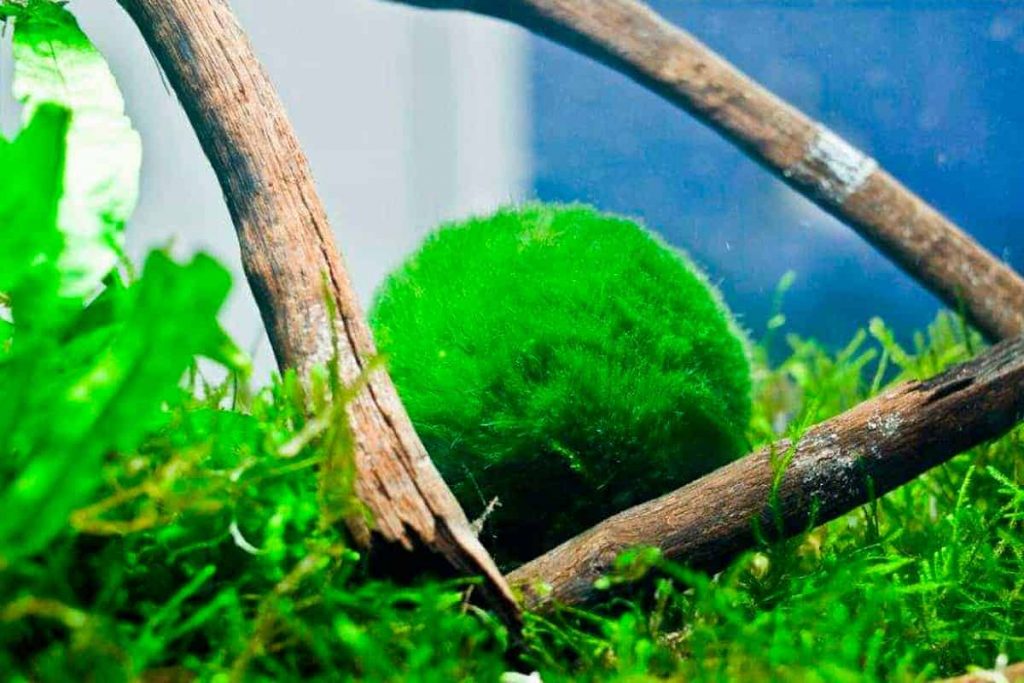
Marimo balls are typically fuzzy green balls of moss that stay on the bottom of your tank. They are actually a kind of algae instead of a true plant, but aquarists love them as they offer a lot of benefits and are simple to handle.
These column feeders take in nitrates from your aquarium and put out oxygen. While they don’t provide much habitat for fish, they can create a good resting spot for smaller fish.
Moreover, they require almost no trimming or maintenance. Compared to other freshwater plants, they are tolerant of changes in tank conditions and even withstand salt well.
20. Bacopa
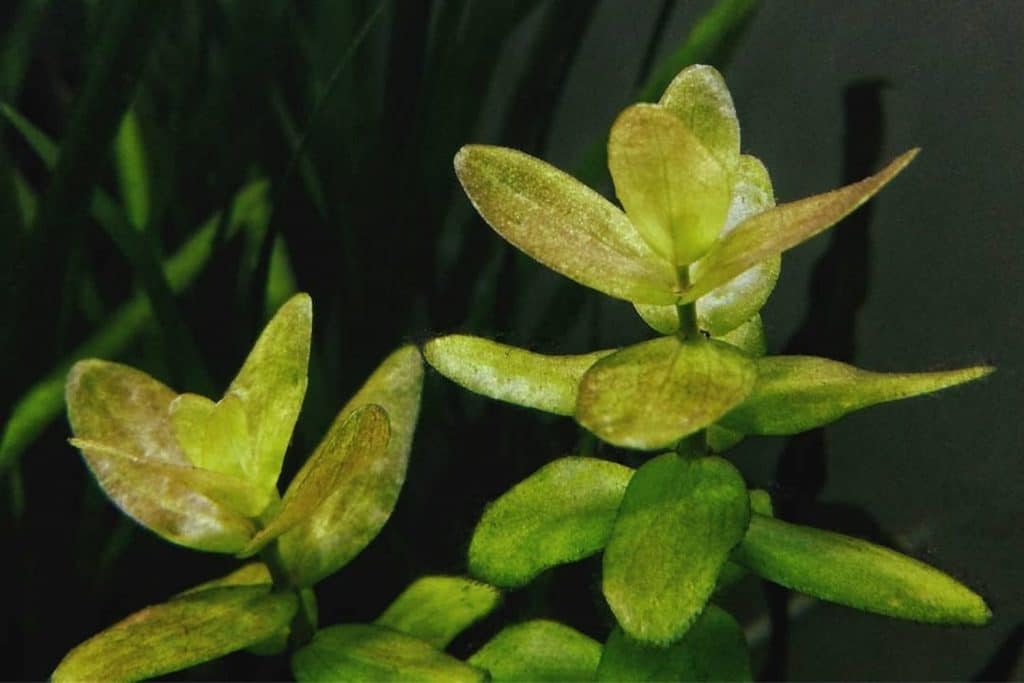
Bacopa is a popular and versatile aquarium plant that can be handled easily with trimming and proper care.
This column feeding plant carries a greenish to yellow leaf color and develops fairly slowly, decreasing the amount of maintenance. It can well tolerate a variety of lighting conditions. The stems on this plant can extend up to about one foot in height if left untrimmed.
A benefit to Bacopa for more experienced aquarists is that it is easy to propagate by cuttings, so you can get a single stalk or bunches of Bacopa thriving in your aquarium.
21. Pelia
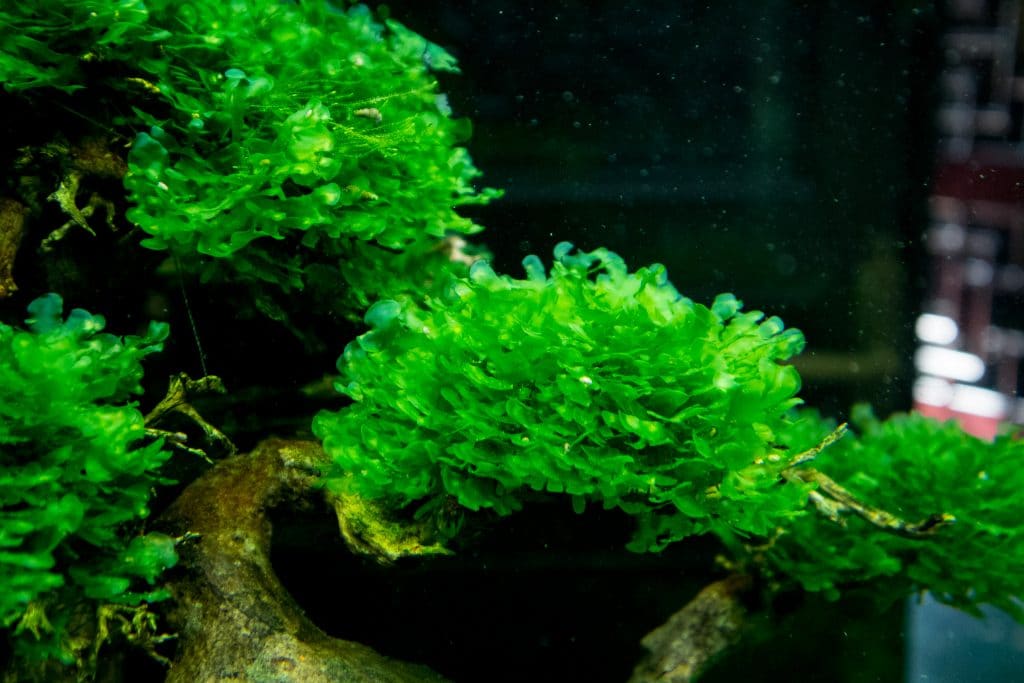
Pelia plant, also called Pelia moss, is a bush-like moss that stays on the bottom of your tank without putting down roots or rhizomes.
As the plant is delicate, a lot of aquarists decide to anchor Pelia with cotton or nylon, particularly in the days after a transplant.
This column feeding plant can survive in plenty of conditions, including nutrient and temperature levels, and has a minimal impact on your tank’s water chemistry.
Even though Pelia can need some trimming to keep its size proper for your aquarium, it is easy for any aquarist to handle.
Which Light is Best for Your plants?
LED light options are becoming more popular compared to the T5 and metal halide options. When it comes to choosing the right light that will fit your tank, there are tons of lights to select from. Some aquarists even set up their lighting rigs and systems with lights and materials from hardware stores. Generally, a great light would have bulbs in the range of 5000k to 10000k with a concentrated spectrum of red and green wavelengths.
Your fish will not care about what light you select. Nevertheless, ultra-bright lights might make your fish and inverts to be shyer and may not mimic the natural darker and blackwaters some species are native to.
Can Aquarium Plants Tolerate Natural Sunlight?
It’s theoretically yes. Plants can live well in the wild with natural sunlight, even after some days of constant cloudy or rainy days. The issue with using natural sunlight for aquarium plants is that it is a far smaller system, and any fluctuations will be less easy to fix by themselves.
There are two primary problems you can come across with using natural sunlight to raise your plants: either not enough light or too much light.
Too Much Light
If your tank is getting too much light, you will need to potentially handle frequent algae growth. As you cannot turn off or track the intensity or period of your light, algae can thrive dramatically. This could result in an entire assortment of problems for your aquarium plants, like the algae choking the plants out of light and nutrients or just creating an unsightly mess that leads to your fish and equipment problems.
If you are lucky enough not to experience algae growth or have succeeded in controlling it, you still need to worry about your plant getting too much light. The majority of freshwater aquarium plants don’t actually require too much light, so providing more than what they require can cause your plant to melt.
In addition, too much natural sunlight can cause the temperature in your tank to escalate, so a chiller will be needed to help control safe temperature conditions for your fish. Or else both your fish and plants could suffer from overheating.
Too Little Light
The other issue you might face is your tank getting deficient light, particularly if you live in an area with four seasons.
It is vital to know whether the plants in your tank can survive and thrive even if it is forecast for several days or when the days are longer in the summer and shorter in the winter. Moreover, you need to determine whether your plants can make that transition between the seasons since the light period and intensity rises and falls from day to day during the spring and autumn.
Nevertheless, some aquarists successfully keep natural fish tanks that contain thriving breathtaking plants. There are methods to manipulate the conditions you need; even if they come from a natural source. The most suitable way to approach maintaining an aquarium that only depends on natural sunlight is to observe the aquatic plants that naturally flourish in your location. These plants are proven to withstand light intensities, periods, and changing seasons.
If you want to research more about the plants in your area, you will have to experience plenty of trial and error. Some supposed low-light aquarium plants may thrive better under intense lighting and vice versa. If you spend time to find out what your fish tank can grow, it will certainly be more than valuable.
Summary
You do not need fancy equipment to build a stunning low-light planted aquarium. In these delicate systems, it’s more crucial to keep water quality and ensure the plants absorb the nutrients they require to grow and flourish at their best.
If there are any beautiful low-light aquarium plants, you think we should include in this list, reach out and let us know. We’re happy to make this list even more complete.




